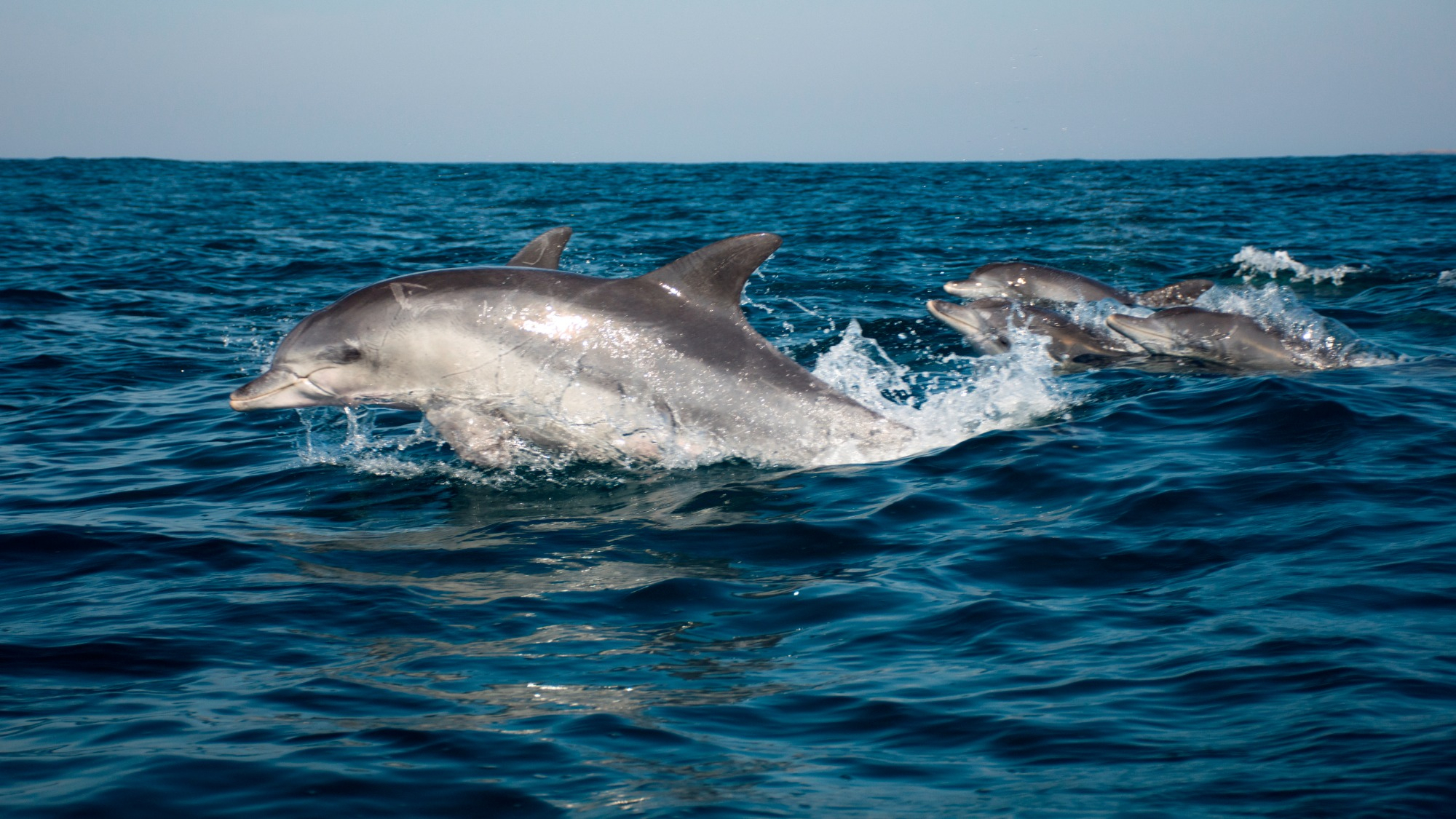

Seeing a majestic superpod or “stampede” of hundreds of free-ranging dolphins swimming and surfacing in the ocean is not only a spectacle for the eye, but can help scientists better monitor populations of the marine mammal. A study published in June in the journal Ecology and Evolution found that using unoccupied aerial systems, or drones, to photograph bottlenose dolphins can inform their conservation efforts.
[Related: How echolocation lets bats, dolphins, and even people navigate by sound.]
When a dolphin swims up to the surface to breathe, their blowhole and dorsal fin are visible. Measuring the distance between these two body parts can help researchers estimate their total length—and therefore the dolphin’s age. The team on the study developed a technique of inferring age based on length for each dolphin measured in a group. The spots that appear with age on some cetaceans like Indo-Pacific bottlenose dolphins can also reveal the animals’ age to scientists.
“This method can help us quantify the age-structure of free-ranging populations,” co-author and PhD candidate at the University of Hawai‘i at Mānoa Fabien Vivier said in a statement. “Healthy dolphin populations usually contain a certain proportion of newborn, immature, and mature animals, while deviances from this distribution may be interpreted as a population growth or decline.”
Earlier studies on using drone photos to measure the body condition and sizes of large whales showed encouraging results, but this is the first to show how this aerial approach can be used to study smaller mammals like bottlenose dolphins.
“Because it is difficult working with free-ranging animals, we could not be sure if it would work out as planned,” said Vivier.
In the study, the team collaborated with a swim with the dolphins program called Dolphin Quest O‘ahu to test out this measuring method on that population of bottlenose dolphins. They then took what they learned with those dolphins and applied it to free-ranging dolphins by collaborating with the world’s longest running dolphin research project, Sarasota Dolphin Research Program in Florida.
The research program provided the team with the total body length, distance between the blowhole and dorsal fin, and age for many of the individuals within their study community. They used this data to test the accuracy of this measurement method and age estimates on the free-range dolphins.
[Related: Male dolphins form alliances to help each other pick up mates.]
“Our hope in developing and using this method is that we can quickly monitor the health of free-ranging dolphin populations,” said Vivier. “This may facilitate the detection of early signs of population changes, for example, a decrease in the number of calves, and provide important insights for timely management decisions.”
This method was initially developed for bottlenose dolphins that are found in temperate and tropical waters around the world. This species, known for their intelligence and echolocation, are well studied due to their proximity to humans, but can also run a high risk of injury due to their closeness to people.
Currently, the team is applying it to the spinner dolphins, which have a longer snout and smaller stature than bottlenose dolphins, in the main Hawaiian Islands. These mammals are known in the Pacific Ocean for their habit of leaping from the water and spinning in the air before plunging back into the water.
